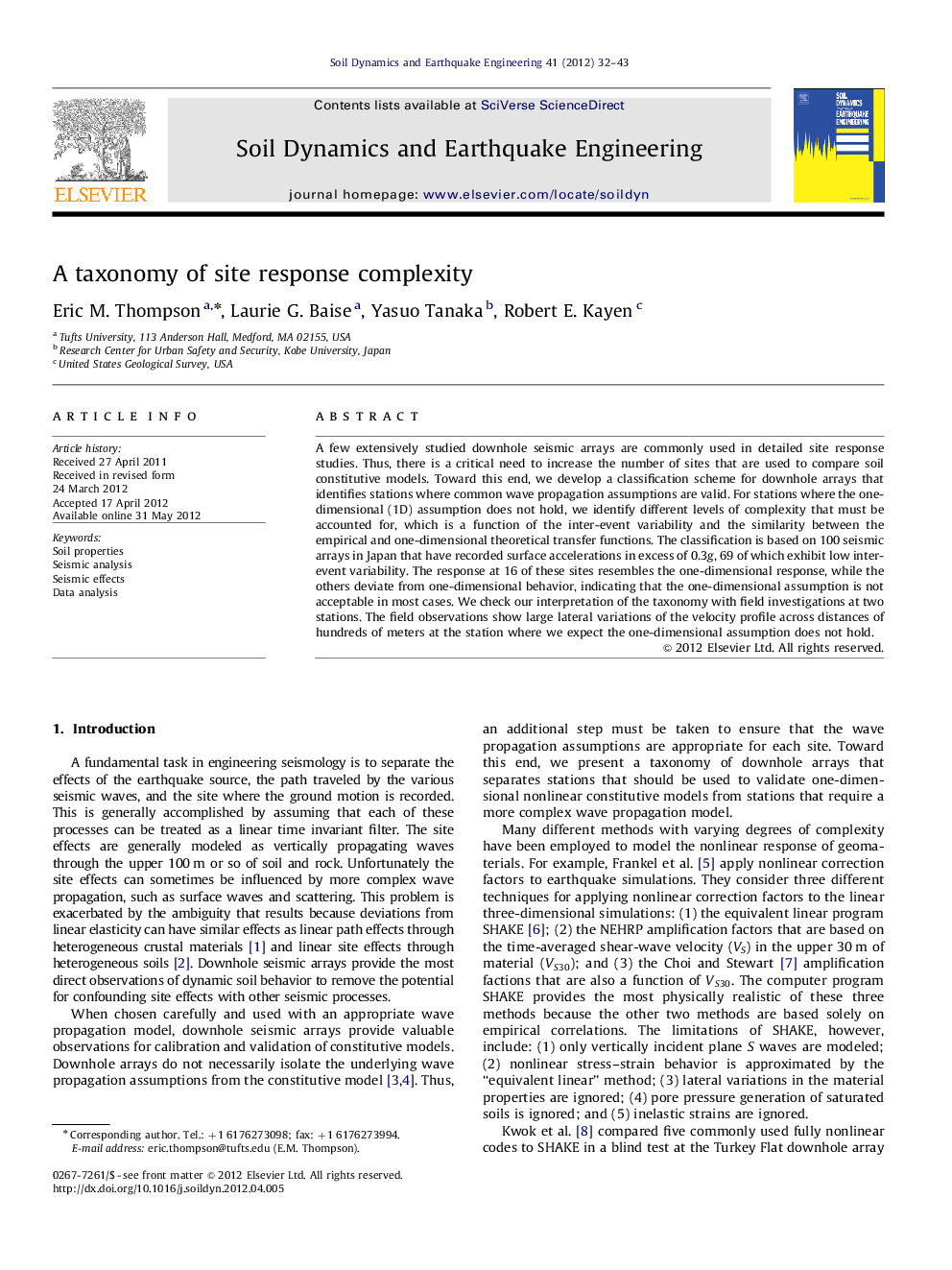| Article ID | Journal | Published Year | Pages | File Type |
|---|---|---|---|---|
| 304503 | Soil Dynamics and Earthquake Engineering | 2012 | 12 Pages |
A few extensively studied downhole seismic arrays are commonly used in detailed site response studies. Thus, there is a critical need to increase the number of sites that are used to compare soil constitutive models. Toward this end, we develop a classification scheme for downhole arrays that identifies stations where common wave propagation assumptions are valid. For stations where the one-dimensional (1D) assumption does not hold, we identify different levels of complexity that must be accounted for, which is a function of the inter-event variability and the similarity between the empirical and one-dimensional theoretical transfer functions. The classification is based on 100 seismic arrays in Japan that have recorded surface accelerations in excess of 0.3g, 69 of which exhibit low inter-event variability. The response at 16 of these sites resembles the one-dimensional response, while the others deviate from one-dimensional behavior, indicating that the one-dimensional assumption is not acceptable in most cases. We check our interpretation of the taxonomy with field investigations at two stations. The field observations show large lateral variations of the velocity profile across distances of hundreds of meters at the station where we expect the one-dimensional assumption does not hold.
► We develop a classification scheme for downhole seismic arrays. ► The taxonomy is based on 100 stations that recorded large-amplitude motions. ► Only small-amplitude motions define the classification scheme. ► The classification identifies stations where common modeling assumptions are valid. ► These assumptions are valid at 16 of 100 stations.
